
|
Astronomy Picture Of the Day (APOD)
 Seyfert's Sextet
Seyfert's Sextet
23.01.2003
Known as Seyfert's Sextet, this intriguing group of galaxies lies in the head portion of the split constellation Serpens. The sextet actually contains only four interacting galaxies, though. Near the center of this...
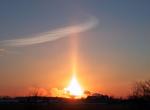 Launch of the Sun Pillar
Launch of the Sun Pillar
22.01.2003
On January 16, NASA's space shuttle Columbia roared into blue morning skies above Kennedy Space Center on STS-107, the first shuttle mission of 2003. But this is not a picture of that launch!
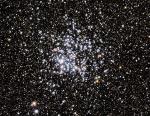 M11: The Wild Duck Cluster
M11: The Wild Duck Cluster
21.01.2003
Many stars like our Sun were formed in open clusters. The above pictured open cluster, M11, contains thousands of stars and is just over five thousand light years distant. The stars in this cluster all formed together about 250 million years ago. The bright young stars in M11 appear blue.
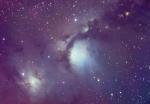 The Reflecting Dust Clouds of Orion
The Reflecting Dust Clouds of Orion
20.01.2003
In the vast Orion Molecular Cloud complex, several bright blue nebula are particularly apparent. Pictured above are two of the most prominent reflection nebulas -- dust clouds lit by the reflecting light of bright-embedded stars. The more famous nebula is M78, on the upper right, cataloged over 200 years ago.
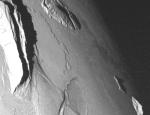 Io at Sunset
Io at Sunset
19.01.2003
How tall are mountains on Jupiter's moon Io? One way to find out is to view them at sunset. Tall structures facing the Sun are then better-lit and cast long shadows. The above...
 Fullerenes as Miniature Cosmic Time Capsules
Fullerenes as Miniature Cosmic Time Capsules
18.01.2003
Scientists have found, unexpectedly, tiny time capsules from billions of years in the past. The discovery involves small molecules that can apparently become trapped during the formation of large enclosed molecules known as fullerenes, or buckyballs.
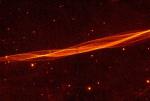 Filaments in the Cygnus Loop
Filaments in the Cygnus Loop
17.01.2003
Subtle and delicate in appearance, these are filaments of shocked interstellar gas -- part of the expanding blast wave from a violent stellar explosion. Recorded in November 1997 with the Wide Field and Planetary Camera 2 on board the Hubble Space Telescope, the picture is a closeup of a supernova remnant known as the Cygnus Loop.
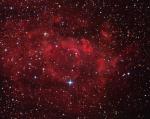 Stars and the Bubble Nebula
Stars and the Bubble Nebula
16.01.2003
Seemingly adrift in an cosmic sea of stars and gas, this delicate, floating apparition is cataloged as NGC 7635 -- The Bubble Nebula. In this wide-angle view, the Bubble nebula lies at the center of a larger complex of shocked glowing gas about 11,000 light-years distant in the fair constellation Cassiopeia.
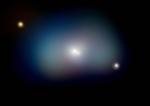 NGC 1700: Elliptical Galaxy and Rotating Disk
NGC 1700: Elliptical Galaxy and Rotating Disk
15.01.2003
In spiral galaxies, majestic winding arms of young stars and interstellar gas and dust rotate in a disk around a bulging galactic nucleus. Elliptical galaxies seem to be simpler, randomly swarming with old stars and lacking gas and dust.
 Ringed Planet Uranus
Ringed Planet Uranus
14.01.2003
Yes it does look like Saturn, but Saturn is one of only four giant ringed planets in our Solar System. And while Saturn has the brightest rings, this system of rings and moons actually belongs to planet Uranus, imaged here in near-infrared light by the Antu telescope at the ESO Parnal Observatory in Chile.
|
January February March April May June July August September October November December |
|||||||||||||||||||||||||||||||||||||||||||||||||